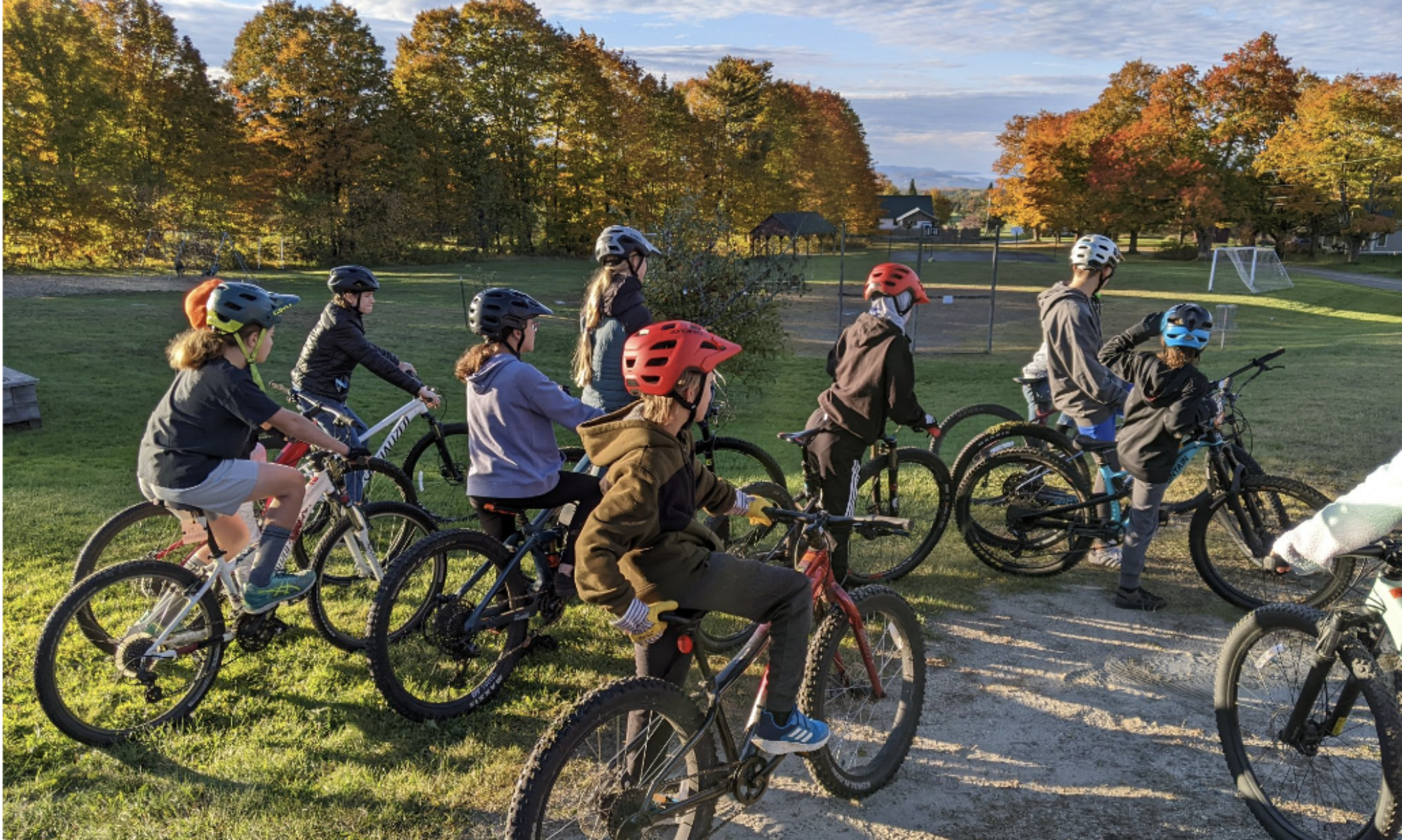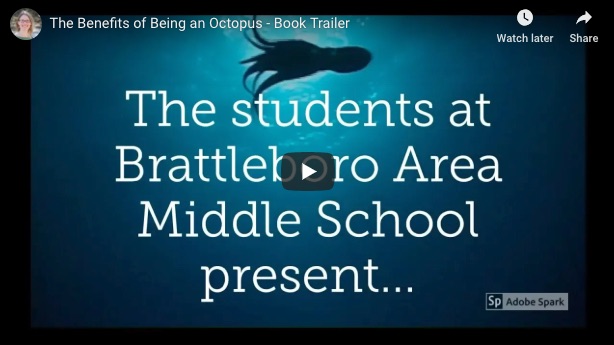Equity in education has — and needs — many lenses. The work is hard, the work is myriad, the work is vital.
While listening to VPR’s Vermont edition the other day, a friend and fellow author, Ann Braden came on the air, and was reading from her new middle grade novel called The Benefits of Being an Octopus. It features main character Zoe, who like many Vermont kids, faces the challenges of living in poverty. Ann read (reprinted here with permission) this excerpt on the radio:
“I glance down at my backpack. My debate prep packet is inside, and for the first time ever I’m tempted to do my homework. I’m not a kid who does homework. And I definitely don’t do big projects, which usually require glitter and markers and poster board and all sorts of things. None of which I have.
Plus, last year in 6th grade, when I actually turned in a poster project, Kaylee Vine announced to the whole class, “OH MY GOD, everyone. Zoey Albro turned in a project. Alert the authorities! The world must be coming to an end.” Then she made that “AHGN AHGN AHGN” sound like a fire drill, and did it every time she passed me in the hall for the whole next week.
But this project doesn’t need any glitter.
And everyone else won’t have fancy posterboards with foam letters that make my flimsy piece of newsprint that the teacher gave me look like gray toilet paper. All I need is to know something – and I do. And maybe, just maybe, if I do this – and if I can rock it – all the others kids will have their minds blown, and it’ll be completely satisfying to watch. “Who would have guessed,” they’ll say, “that Zoey knew so much cool stuff? I had no idea! I thought I knew who she was, but clearly I didn’t AT ALL.” Maybe Kaylee Vine would even stop switching seats on the bus while holding her nose to get away from me.
This excerpt expresses so much of what many of our students face.
Poverty in Vermont
According to Seven Days:
“71,329 Vermonters lived below the federal poverty line in 2016 — roughly 10,000 more than in 2015. Vermont was the only state to see a statistically significant increase in its poverty rate, from 10.2 percent in 2015 to 11.9 percent in 2016.”
And according to the Burlington Free Press, Vermont kids are more acutely affected:
For Vermonters under the age of 18, the poverty rate is 13.8 percent, which means children are more likely to live in poverty than the average Vermonter, and twice as likely as senior citizens. In part, that differential is because the federal government gives a lot of money to people over 65, rich or poor, in the form of Social Security and not as much to children.
Ann brings up in the interview that often teachers are in the middle class, while many of their students can be living close to or at the poverty line. That can lead to blind spots around issues such as homework, projects, and opportunities.
Personalization
Take for example the movement toward Genius Hours and passion projects in personalization. These are blocks of time schools are devoting to let students explore their own interests and to foster a love of learning and engagement, and put students in the driver’s seat of their own learning. That all sounds great, right?
Remember the science fair? Did you participate as a child, or do this with students? Were all students given equal access to materials? Right. I remember the students who had shiny kits their parents bought. Or elaborate games or rewards for observers who came by. Or the shiniest, most beautiful letters, like Zoe describes above.
As a sixth grade teacher, I remember adding to my budget 20 something tri-folds every year so every student had one, and didn’t have to buy one. And I kept my art materials stocked up. But inevitably those students who had snazzy materials like metallic sharpies, or special stencils often brought those to these projects. And those same students often had the time to work on them at home, and the support from an adult to deepen the project. Not all students have these same privileges.
Enter passion (or curiosity) projects
Passion projects are an incredible way to engage students in self-driven, engaging work. Our own Emily Hoyler described them in this post:
I stumbled onto Scot Hoffman, Mike Jackson, & Sammi Smith’s Google Doc of Curiosity Projects last spring. Their Curiosity Projects are a six-week, inquiry-based research exploration on a topic of personal interest to the student, and culminates in a showcase of student presentations. The project’s goals are for students to “initiate their own learning, gather information, share information, and reflect on their learning.” Teachers become collaborators, guiding students to resources, helping connect them with mentors, and prompting frequent reflection to help students make meaning of their learning.
We also have a snazzy toolkit of video, examples, and tips about creating genius hours, passion and curiosity projects defined here:
Genius Hour refers to open-ended, student-driven projects during a pre-determined time. Students pick a topic and decide how they will exhibit their learning. During the research phase students often connect with mentors within the school or in the community. (Genius Hour is also called Passion Projects or 20% time.)
This is an incredible tool for personalization…
BUT….
How do we create personalization that is truly equitable?

It’s important to consider our students’ lived realities, even when we are operating in schools with limited budgets and access to materials, when we launch these types of projects. Educators can’t assume that students will be able to find the materials they need to do these projects. In the planning, for these projects, educators can consider how they will make sure all students have access to the materials they need, as student project ideas are thought of and projects take shape.
Resources to consider in the planning
Once you have an idea of what students are planning, make sure to have materials on hand. If you don’t have the funds in your materials budget, here are some to consider:
- Front Porch Forum. You can request any needed materials from the wider community on this listserv.
- Donor Choose. Rebecca Whitney, library media wizard at Ottauquechee, uses this cite to fund Makerspace and library needs.
- curriculum budgeting
Not homework
It is essential plan time during the school day for the project. These are not homework projects, because not all students will have access to materials, internet, and support.
Help students explore interests
Not all students will arrive at passion project or genius hour times knowing what they are interested in. Many students will not have had the opportunity or support to explore their own interests, especially in a school setting. Students might need interest inventories or surveys, conversation and dialogue, and to hear ideas from others to help them discover a topic they are interested in exploring. We as educators can’t assume they will come to us with these ideas and interests fully formed and ready to explore.


